Most Getty Museum staff members have never been to our paintings storage area, but today the participants of the Art & Language Arts (ALA) program got a special behind-the-scenes tour. What a special treat after four intensive days of workshops, tours, art-making, lesson planning, and reading discussions!
Speaking of readings…ALA teachers, please leave a comment that describes a concrete way that you can develop your students’ artistic and perceptual growth (see the list on p. 19 of your reading).
-

-
Every day should begin with art! We kick off the fourth day of the Art & Language Arts seminar with printmaking.
-

-
Teachers were challenged to create blind contour drawings by etching into scratch foam.
-

-
Teacher Diana Bosworth views the colorful results of her print.
-

-
Teacher Bill Steffes looks pleased with the results—as he should be!
-

-
42nd Street Elementary School teachers Judy Matsumoto and Donna Massenburg are enjoying the printing process.
-

-
Tan Pratontep created a beautiful scene using a variety of lines.
-

-
Love the experimentation with color!
-

-
Museum educator Kelly WIlliams leads a discussion about four components of a quality art curriculum—artistic and perceptual skills, artistic production, art history, and art analysis.
-

-
Teachers from Kennedy Elementary School share ideas for their lesson plans.
-

-
Museum educator Theresa Sotto discusses the benefits of open-ended questions to elicit meaningful responses from students.
-

-
After making art, exploring strategies for teaching art, participating in curator tours, and eating delicious breakfasts, teachers are now challenged to develop a lesson plan in just a few hours.
-

-
Teachers are hard at work planning their arts-integrated lesson plan.
-

-
And now for the reward! Teachers get to see our paintings storage area, where they can see works of art that are not on view in the galleries.
-

-
On the way to the paintings storage, where curator Peter Bjorn Kerber regales us with fascinating stories about paintings that the general public is not currently able to see.
How can we make learning fun? By cultivating a playful spirit! And we certainly did just that in the third day of the Art & Language Arts Summer Seminar.
If you participated in today’s program, post a comment that describes one way that you can use play in your classroom to enhance student learning.
-

-
Today’s media exploration focused on sculpture. Teachers came up with all sorts of imaginative sculptures using wire and clay.
-

-
Teachers were encouraged to explore a variety of textures by using plastic utensils, straws, and modeling tools.
-

-
Try using coated wire to add a playful, textural element to clay sculptures.
-

-
Two teachers, two colorful bowls, two different ways!
-

-
When given the opportunity to use your imagination, a variety of subjects emerge–both living and man-made sculptures were created.
-

-
Our extraordinary and talented intern Iris Hu is to blame for all the fun teachers had while exploring clay.
-

-
And museum educator Theresa Sotto is to blame for making teachers read articles after making art.
-

-
Curator Charissa Bremer-David captivated teachers by describing the history of this magnificent bed.
-

-
Charissa demonstrates the swiveling action of a chair on which Marie Antoinette once sat while her servants fixed her hair.
-

-
It’s amazing to be able to peek inside desks we’re not allowed to touch. Thank you, Charissa!
-

-
Can you see the mark of the desk’s maker near Charissa’s right hand?
-

-
Charissa’s talk is both informative and entertaining, as evidenced by our huge smiles.
-

-
We gaze up at a chandelier that was designed to hold goldfish in its glass bowl.
-

-
Upper elementary teachers pause for a Kodak moment.
-

-
Graduate intern Elizabeth Osenbaugh leads a tour of the sculpture collection.
-

-
Teachers look closely at the textures that Bernini was able to render in this marble sculpture when he was only 19 years old.
-

-
This object is affectionately known internally as the “little pot.”
-

-
Museum educator Kelly Williams explains a writing activity that teachers can do with our decorative arts collection.
-

-
Teachers tell their partners about all the details they can find in a work of art.
-

-
Our period rooms are terrific places to go to transport students back in time.
-

-
Inspired by Franz Xaver Messerschmidt’s Vexed Man, teachers created their own expressive heads thanks to the guidance of teaching artist Judy Blake.
-

-
Look at the fantastic details on that sculpture!
-

-
So much expression can be communicated in sculptures no taller than three inches.
-

-
The creativity of the teachers shine through in this “class picture.”
-

-
After working with sculpture, teachers were invited to create dream beds and place them in settings.
-

-
The playful nature of this activity is evident!
-

-
Who doesn’t want a feather bed?
-

-
Perhaps all beds should have feathers.
-

-
A bed fit for a queen.
-

-
A boat-shaped bed sets sail.















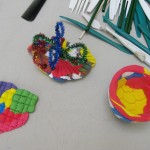


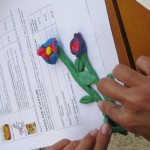

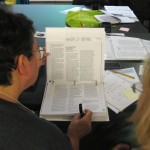


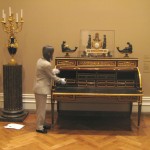
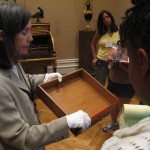
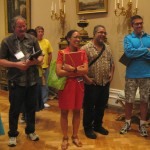

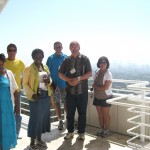
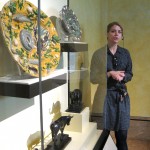




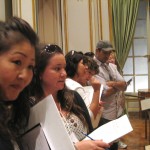



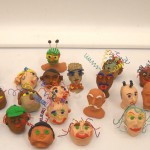
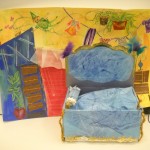

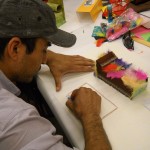
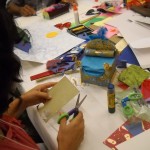
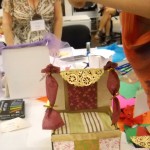

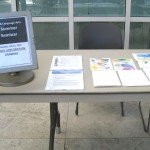

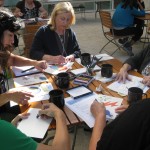
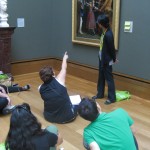


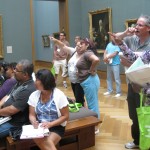
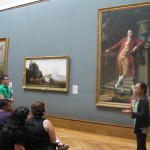
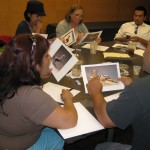
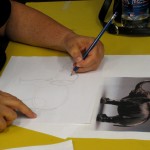
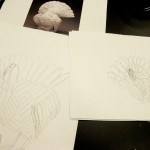
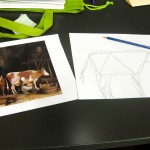

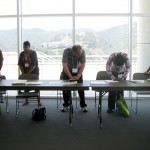
Recent Comments